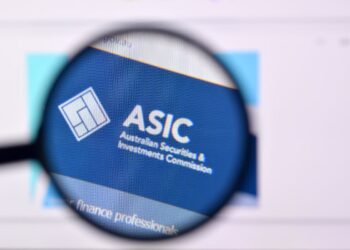Deborah Wixted gives an update on employee share schemes and what the new rules mean for your clients.
New rules on the tax treatment of employee share schemes became law on December 14, 2009, with significant changes from the original 2009 Federal Budget proposal.
Financial advisers should be mindful of the new employee share scheme rules when advising clients who:
- receive remuneration as shares or rights under an employee share scheme; or
- have the option to salary sacrifice or take a bonus as employee shares.
What is an employee share scheme?
An ESS is a scheme under which ESS interests in a company are provided to its employees in relation to the employee’s employment.
An employee share scheme interest in a company is a beneficial interest in, or a right to acquire, a beneficial interest in a share in the company and covers shares, rights, options and certain stapled securities.
Who can offer an employee share scheme?
Companies and other entities treated as companies for tax purposes can offer an employee share scheme, including:
- corporate limited partnerships;
- corporate unit trusts; and
- public trading trusts.
Who can participate in an employee share scheme?
The following individuals can participate in an employee share scheme:
- employees of an eligible employer or its subsidiary;
- directors or officeholders;
- certain independent contractors;
- associates of employees; and
- those who receive their employee share scheme interests through a beneficial interest in an employee share trust.
What are the new employee share scheme taxation rules?
The new employee share scheme taxation rules apply to all shares and rights acquired on or after July 1, 2009, and may also affect certain shares and rights acquired prior to July 1, 2009.
Transitional rules also apply to employee share scheme interests acquired prior to July 1, 2009. Employees no longer elect between upfront or deferred taxation on their employee share scheme interests.
Instead, the structure of the employee share scheme offered by the employer will determine whether the interests are taxed upfront or on a deferred basis, with the key points set out in the table below.
There are a number of other important matters that must be considered by employer clients wishing to offer an employee share scheme and detailed taxation advice should be obtained.
In order to take advantage of both the upfront and deferred tax concessions, the employee share scheme must meet the following conditions.
- The employee must be employed by the company offering the scheme, or a subsidiary.
- The scheme must relate to ordinary shares.
- The scheme must be offered to at least 75 per cent of resident permanent employees with at least three years service.
- The employee share scheme interest provided cannot be disposed of within three years unless the employee ceases to be employed at an earlier time.
- No more than 5 per cent ownership or control of the company can be obtained by one employee due to participation in an employee share scheme.
When are employee share scheme interests at real risk of forfeiture?
Whether an employee share scheme interest can be tax deferred hinges predominately on whether it is subject to a ‘real risk of forfeiture’.
The ‘real risk of forfeiture’ test does not require the ESS benefits to be at a significant or substantial risk of being lost, however, the risk has to be more than a mere possibility.
Performance hurdles and forfeiture on cessation of employment may be considered genuine risk of forfeiture.
However, whether or not a real risk of forfeiture is present is based on the facts and circumstances of the particular situation.
How are employee share scheme interests treated for CGT purposes?
Shares or rights acquired under an employee share scheme are taxed consistently with other capital assets once they have been taxed under the ESS regime.
Generally, this will mean taxation under capital gains tax rules, but may also include taxation on a revenue basis as trading stock.
An employee share scheme interest acquired on a deferred taxation basis is taken to have been acquired for CGT purposes immediately after the deferred taxing point, which is used to determine:
- the cost base (market value of the interest at that time); and
- the CGT acquisition date.
Additionally, no CGT event will occur if the employee disposes of their employee share scheme interest within 30 days of the ESS deferred taxing point (which then becomes the disposal date).
For CGT purposes, an employee share scheme interest acquired on an upfront taxation basis is taken to have been acquired for its market value when the employee initially acquired the interest.
Deborah Wixted is head of technical services at Colonial First State.





